42 what is total fat on nutrition label
Calories on the New Nutrition Facts Label | FDA Calories refers to the total number of calories, or "energy" you get from all sources (carbohydrate, fat, protein, and alcohol) in a serving of a food or beverage. Calories Go Big Calories are now... How To Read Food and Beverage Labels - National Institute on Aging Most older adults exceed the recommended limits for saturated fats, sodium, and added sugars. Compare and choose foods to get less than 100% DV of these each day, making sure to adjust for how many calories are in your diet. Additionally, many older adults do not get the recommended amounts of dietary fiber, vitamin D, calcium, and potassium.
Totino's Nutrition Info & Calories Jul 2022 | SecretMenus The Rolls on the Totino's menu with the lowest amount of total fat are Chicken Parmesan Rolls (6 g), Lean Pizza Rolls (6 g) and Supreme Pizza Rolls (8 g). The Rolls on the Totino's menu with the highest amount of total fat are Three Meat Pizza Rolls (10 g), Supreme Pizza Rolls (8 g) and Lean Pizza Rolls (6 g).
What is total fat on nutrition label
How To Calculate Percent Daily Value for Food Portions The Percent Daily Value is calculated by dividing the amount in a serving by the total recommended daily amount. Multiply that answer by 100, and you've got your %DV! For example: 3g in a serving. 15g recommended per day. 3/15 = 0.2. 0.2 x 100 = 20%. Serving Size on the New Nutrition Facts Label | FDA The serving size is shown as a common household measure that is appropriate to the food (such as cup, tablespoon, piece, slice, or jar), followed by the metric amount in grams (g). The nutrition ... Food Labels Guide & Examples | How to Read Nutrition Labels - Study.com The third section of a nutrition facts label is usually the longest. It lists the nutrients found within a single serving of the food item, measured in grams (g). The first item on the list is...
What is total fat on nutrition label. How to Read Nutrition Labels Like a Pro - Reader's Digest Canada Daily values for carbohydrates, total fat, saturated fat and trans fat are based on a 2,000-calorie-a-day diet. Daily values for the remaining nutrients apply to most people, regardless of caloric needs. ... Now that you know how to read nutrition labels, find out the best sources of protein, according to Canada's Food Guide. Originally ... How to Understand and Use the Nutrition Facts Label | FDA When a food you like is high in saturated fat, balance it with foods that are low in saturated fat at other times of the day. Also, pay attention to how much you eat during the entire day, so that... Guide to Full-Fat vs. Nonfat Greek Yogurt - Shape Here's a nutritional comparison of one container (6 ounces or 170 grams) of Fage Total 5%, which is full-fat, and Fage Total 0%, which is nonfat. As you can see, the 7 grams of total fat difference plays a significant role in the calories in Greek yogurt. If your diet consists of about 1,800 calories a day, then a 6-ounce container of fat-free ... Daily Value on the New Nutrition and Supplement Facts Labels That means that a packaged food with 36g of total fat in one serving (previously 55% DV) now has 46% DV. See below for a side-by-side comparison of the information on the original and new Nutrition...
CFR - Code of Federal Regulations Title 21 Contains 13 g of fat per serving.") is declared adjacent to the most prominent claim or to the nutrition label, except that if the nutrition label is on the information panel, the quantitative information may be located elsewhere on the information panel in accordance with § 101.2. How to decode food labels to boost your nutrition - Scrubbing In Total Fat The total fat value includes monounsaturated, polyunsaturated, saturated and trans-fat. Dietary fat has more than twice the calories per gram as either carbohydrate or protein, so calories from fat can add up quickly. Aim for around 25% to 35% of calories from fat. How to Read Nutrition Facts - Who Eatz When you flip the container or package over to read the label, one of the first things you should look at is total calories and calories from fat. No matter what anyone else tells you, you're never going to lose weight or gain weight with a calorie imbalance. Calories are the best way to measure total energy going in and out of your body. Total Fat - Misleading or Stumped — MyFitnessPal.com For example, looking at the nutrition summary for a day, 67% of the Fat is poly and mono foods such as nuts, chia seeds, ground flax, and olive oil. That's misleading. One food example: 1/5 cup walnuts display Fat=13.3 grams, yet 82% (11 grams) consists of mono and poly fats. Gosh, this is misleading and unhelpful.
The Basics of the Nutrition Facts Label A food item with a 5% DV of fat provides 5% of the total fat that a person who needs 2,000 calories a day should eat. You may need more or less than 2,000 calories per day. This means that you may need more or less than 100% DV that is listed on the package for some nutrients. Low is 5% or less. What Foods Are High in Fat? High-Fat Foods to Avoid Restrict total fat consumption to 20%-30% of your total daily calorie requirement (about 55-65 grams a day for 2,000-calorie diet) Restrict saturated fat consumption to 6% of your daily total calorie requirement. Avoid consuming trans fats Opt for unsaturated fats Eat more vegetables, whole grains, and fruits Dietary Fiber on the Nutrition Facts Label | ESHA Research The final rule for FDA's 2016 updates to Nutrition Facts labeling incorporates two major changes to dietary fiber that food manufacturers need to be aware of: (1) a definition of "dietary fiber" - a term that FDA had not previously defined and (2) an increase in the DRV from 25 grams to 28 grams. Nutrient and Calorie Rounding Table | How To Read Nutrition Labels Nutrient and Calorie Rounding Table | How To Read Nutrition Labels Nutrient and Calorie Rounding Table Shown below are the guidelines used to round off calorie and nutrient amounts: 1/2 Teaspoon in Your Smoothie Burns Fat 728% Faster Click Here
1.2.1. Learning From Food Labels - Concordia University Remember, to have a healthy diet the recommendation is to eat less than this amount of fat grams per day, especially if you want to lose weight. Table 1.2.1.2 Daily Values Based on a Caloric Intake of 2,000 Calories (For Adults and Children Four or More Years of Age) Food Component Component. Daily Values Canada.
What Does The Term More Mean On A Food Label? - QuestionAnswer.io The nutrition facts label includes: a column of information — "% Daily Value" — that shows what portion of the amount of daily recommended nutrients the product provides, based on a 2,000-calorie diet. information about total fat, saturated fat, trans fat, cholesterol, fiber, and other nutrients. serving size. How do you decode a food label?
What Low Saturated or Reduced Fat Really Means - Verywell Health It also means that saturated fat contributes 15 percent or less to the total calories of the food. If pertaining to a meal, the statement "low in saturated fat" means that there is only 1 gram of saturated fat per 100 grams of food, or that saturated fat makes up less than 10 percent of the total calories of that meal. Saturated Fat-Free
How To Read Nutrition Facts Labels For Weight Loss Whats new When you're eating, it's important to be mindful of portions. A serving of meat should be roughly the size of a deck of cards or the palm of your hand. For vegetables, a serving should be the size of a small fist How To Read Nutrition Facts Labels For Weight Loss. A serving of fat should be the size of a thumb.
CFR - Code of Federal Regulations Title 21 Medical Devices. 4. Databases. 5. -. The information on this page is current as of Mar 29, 2022. For the most up-to-date version of CFR Title 21, go to the Electronic Code of Federal Regulations (eCFR). 6. New Search.
Changes to the Nutrition Facts Label | FDA While continuing to require "Total Fat," "Saturated Fat," and "Trans Fat" on the label, "Calories from Fat" was removed because research shows the type of fat is more important ...
How to Determine the Nutritional Value of Food - FoodCrumbles Macronutrients. Micronutrients. Keep in mind: foods are variable. Determining the nutrient content in three ways. 1) Analyze the contents in a lab. 2) Used published values from literature. 3) Calculate your nutritional value. Determining energy content is a simple calculation. Set conversion values.
Food Label Reading - What You Need to Know - Drugs.com If a 100g serving of a food contains 5g total fat, the label can say it is 95% fat-free. Light Or Lite: These terms mean several things. A food must have all of the following qualities to be called light. 1/3 fewer calories per serving than the regular version of this food. 1/2 or less of the total fat of the regular version of this food.
Food Labels Guide & Examples | How to Read Nutrition Labels - Study.com The third section of a nutrition facts label is usually the longest. It lists the nutrients found within a single serving of the food item, measured in grams (g). The first item on the list is...
Serving Size on the New Nutrition Facts Label | FDA The serving size is shown as a common household measure that is appropriate to the food (such as cup, tablespoon, piece, slice, or jar), followed by the metric amount in grams (g). The nutrition ...
How To Calculate Percent Daily Value for Food Portions The Percent Daily Value is calculated by dividing the amount in a serving by the total recommended daily amount. Multiply that answer by 100, and you've got your %DV! For example: 3g in a serving. 15g recommended per day. 3/15 = 0.2. 0.2 x 100 = 20%.
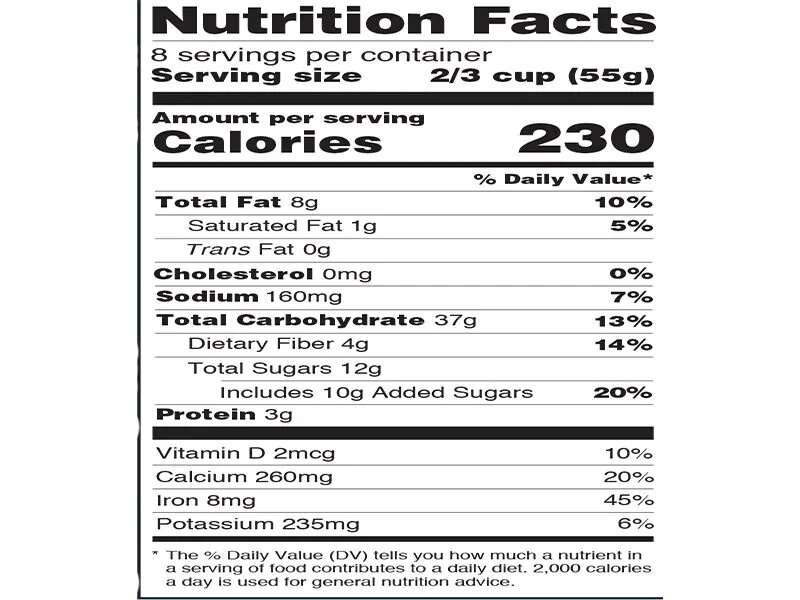

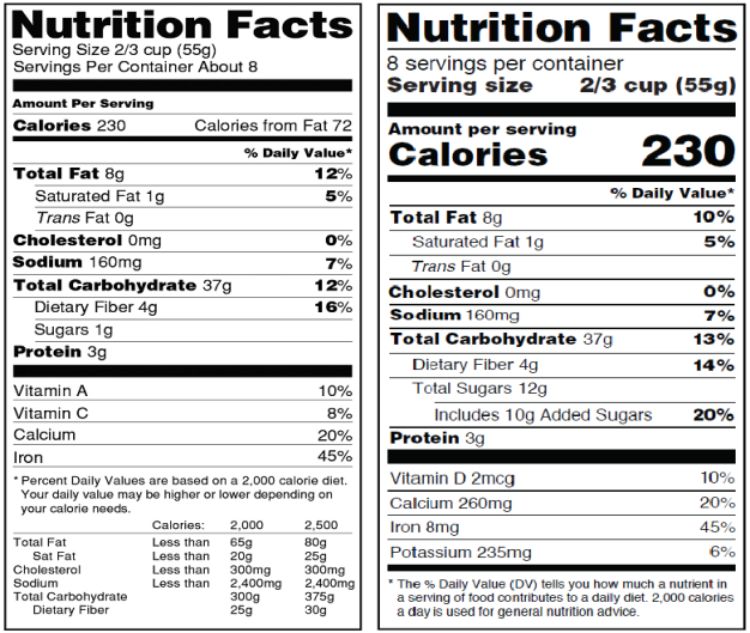
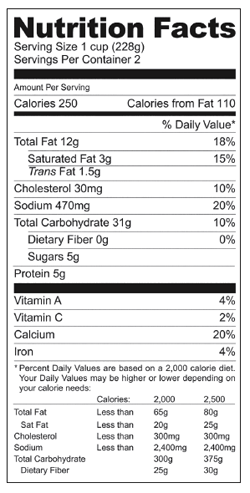
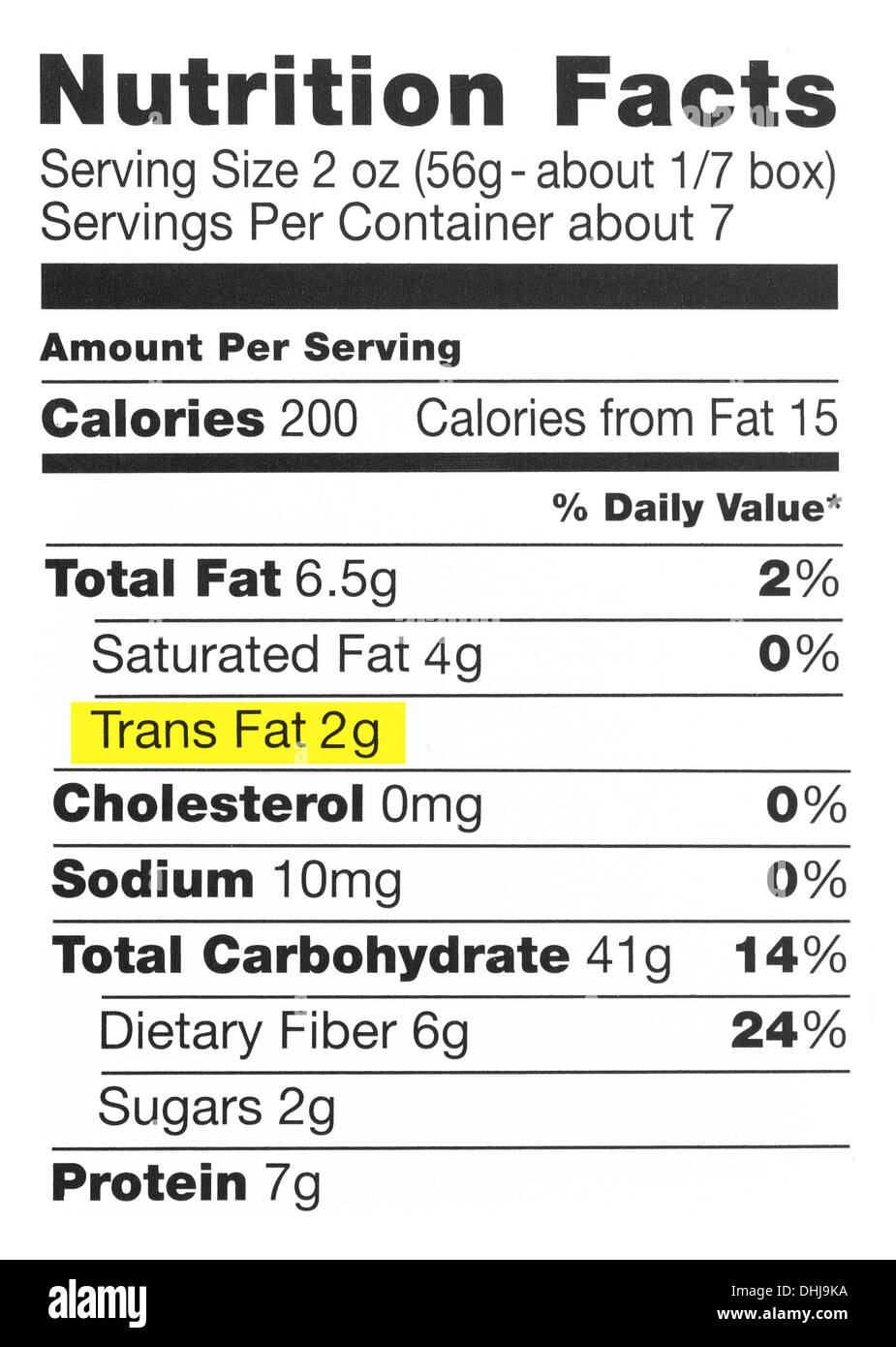
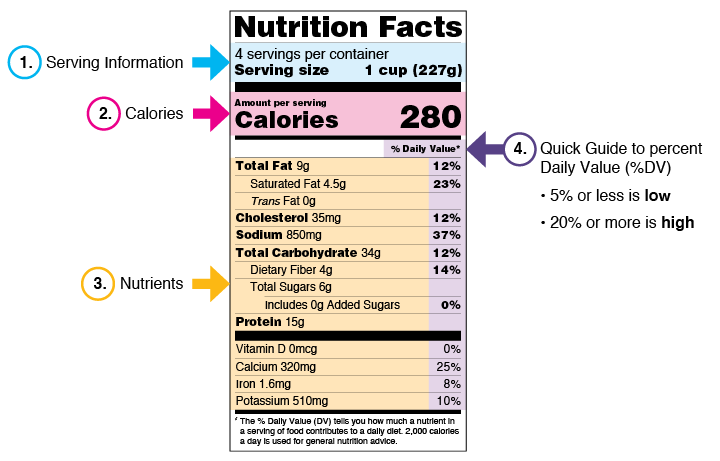
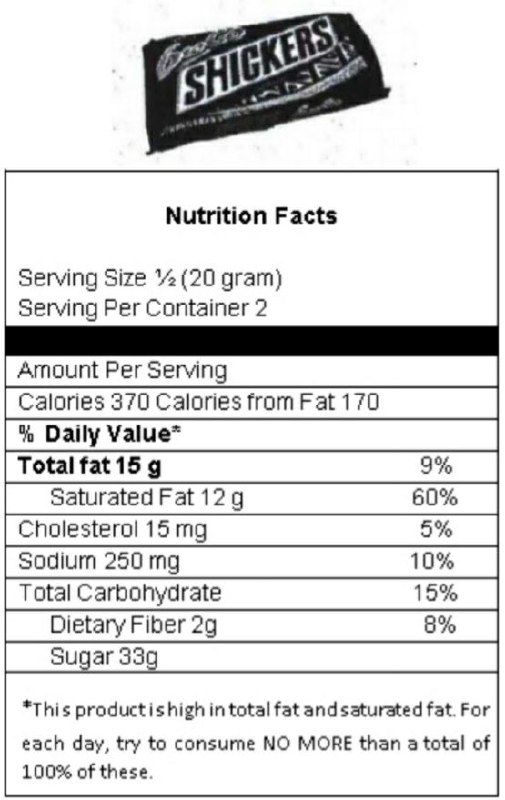


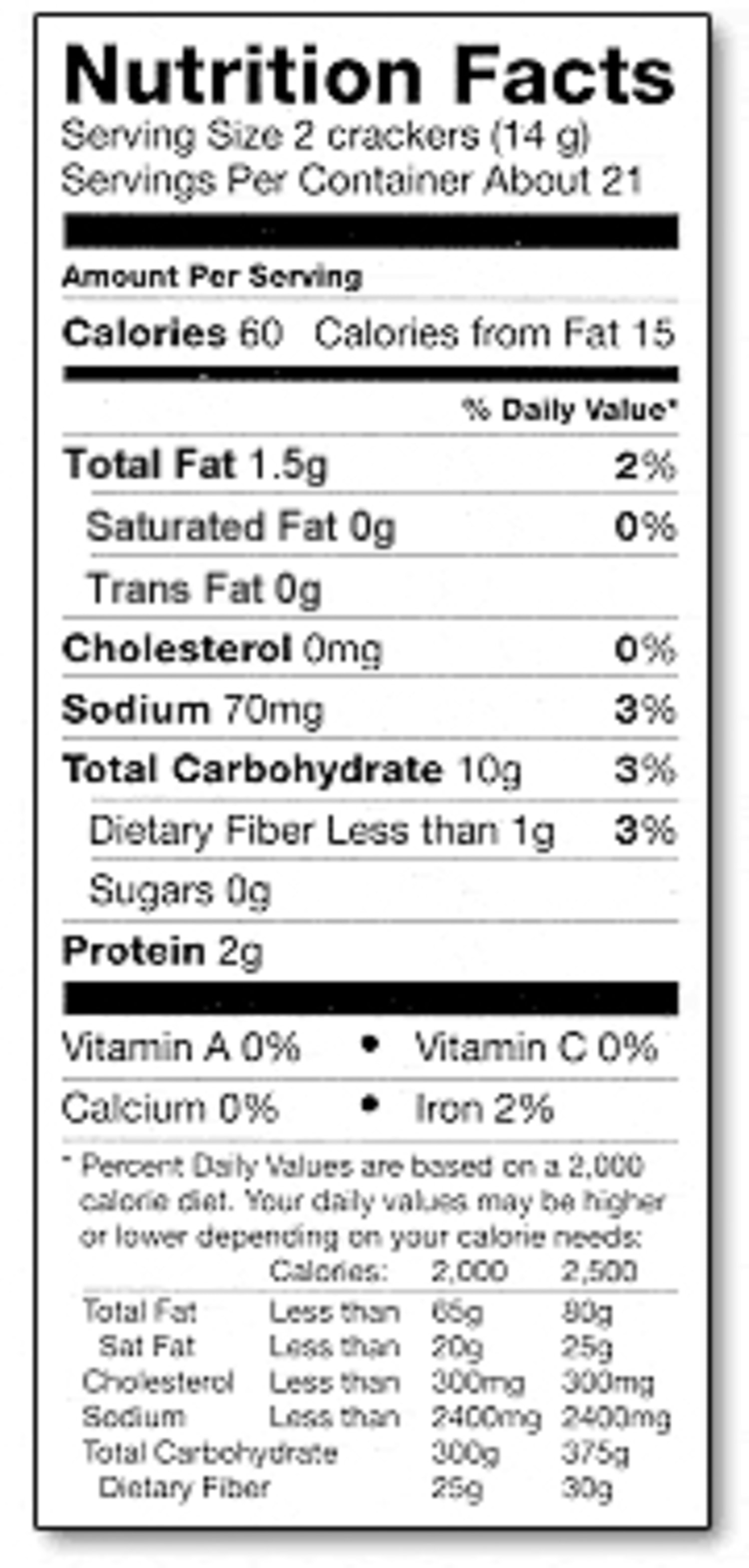

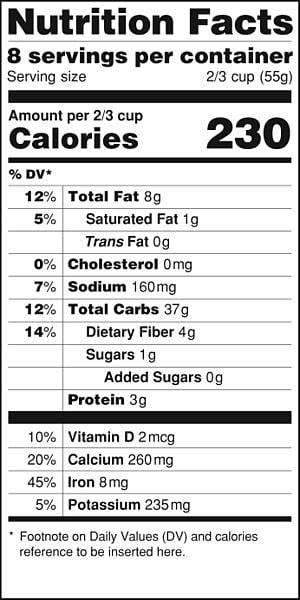

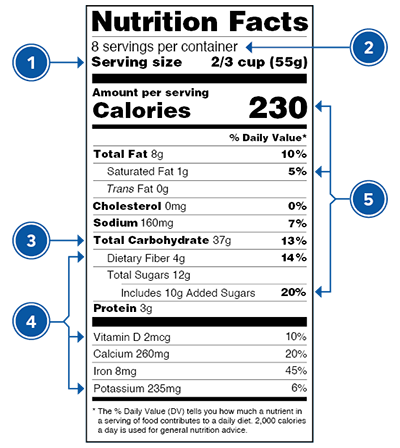
/Untitled-design-1--5755c3703df78c9b46903dab.jpg)
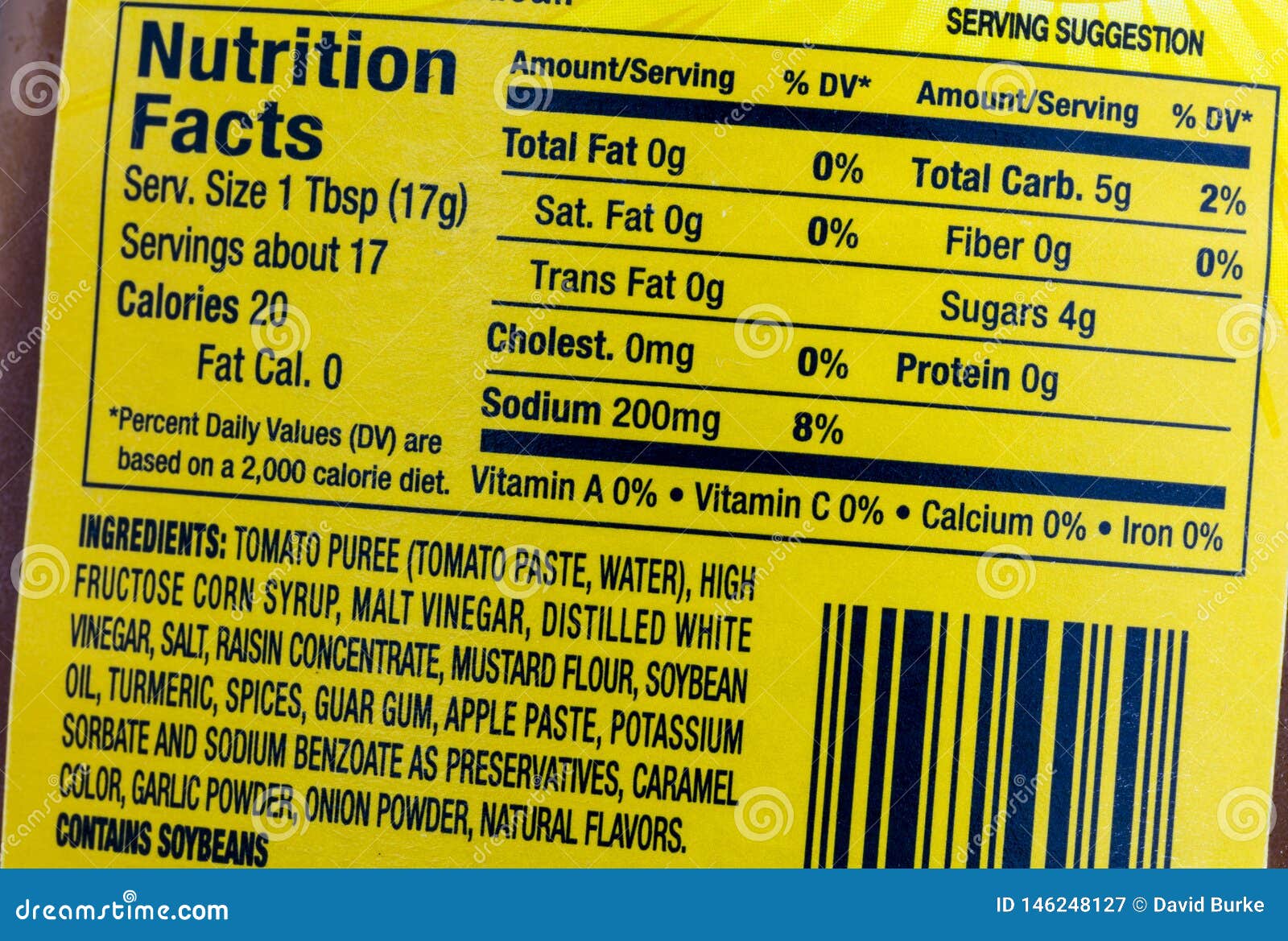
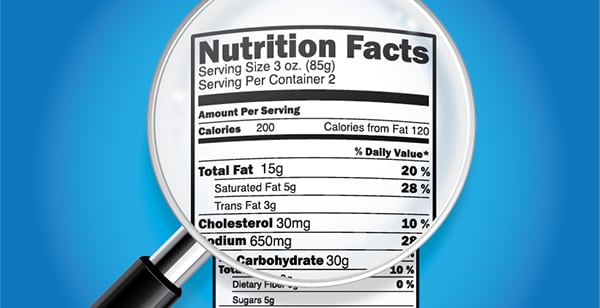

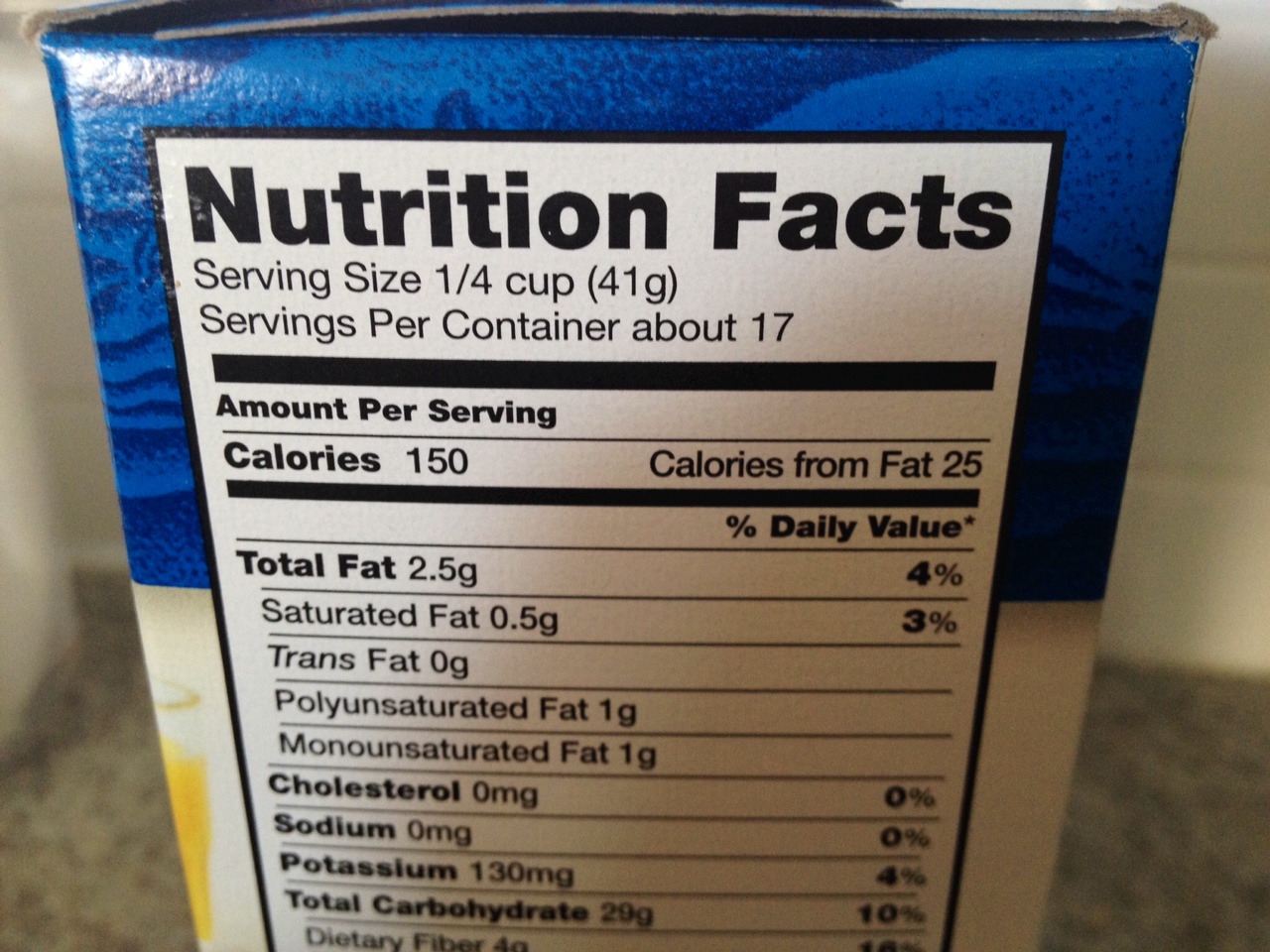







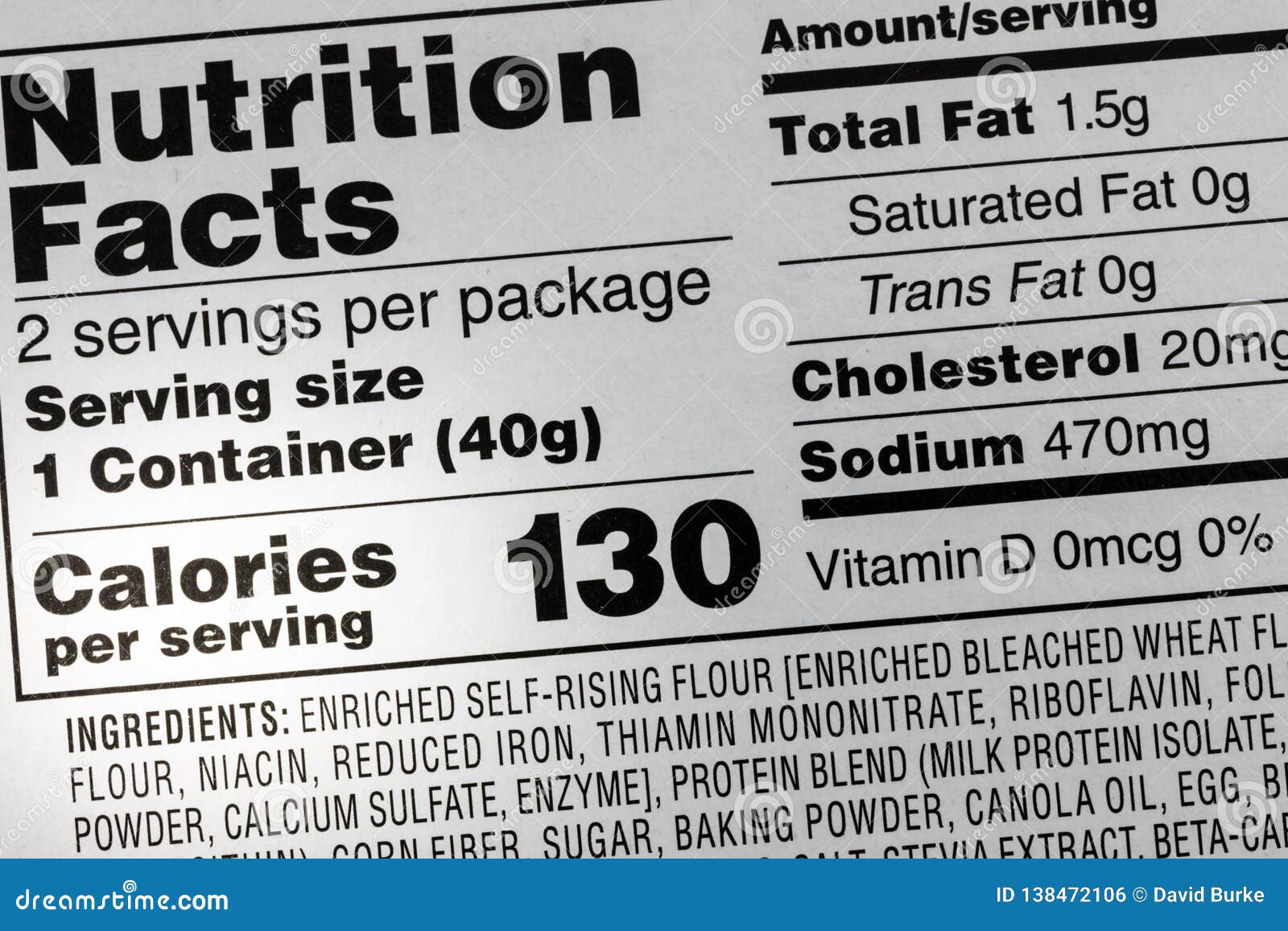


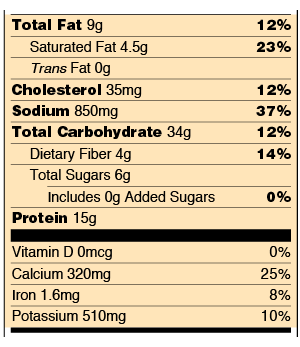






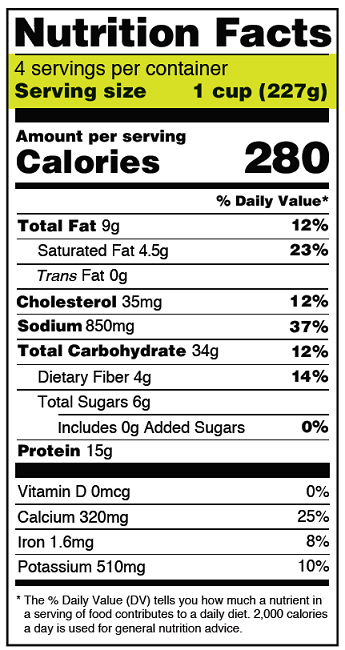
Post a Comment for "42 what is total fat on nutrition label"